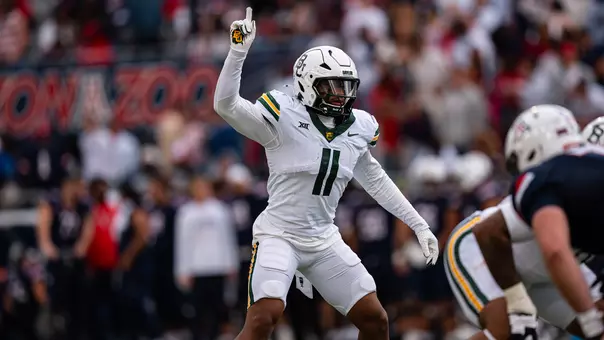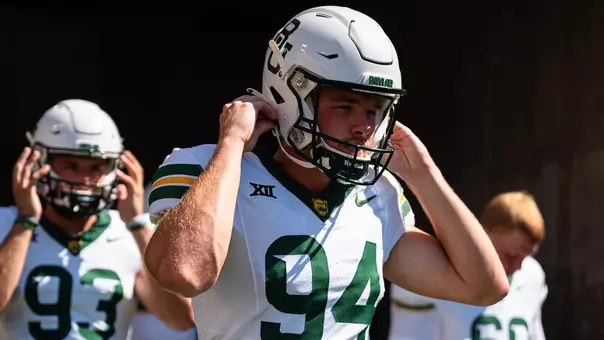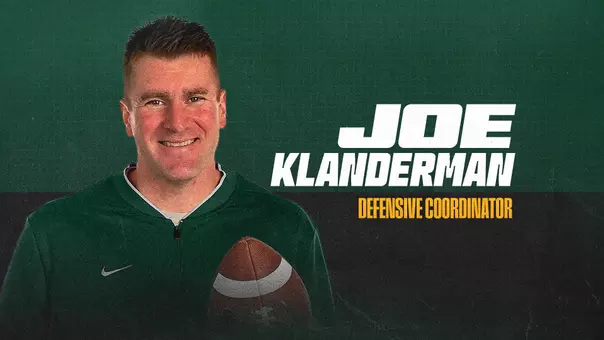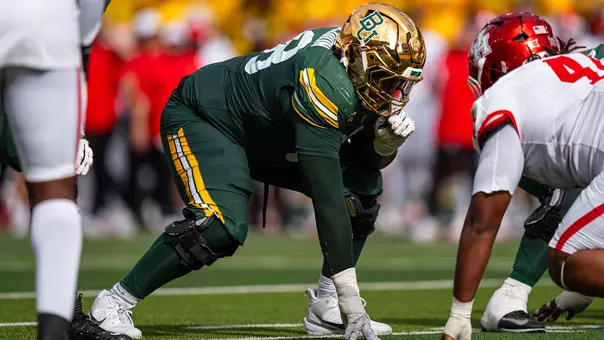Dave Campbell's Insider Notepad -- 1/17/01
1/17/2001 12:00:00 AM | Football
Jan. 17, 2001
Editor's Note: Dave Campbell's column appears in each edition of the Baylor Bear Insider Report, available upon membership in the Baylor Bear Foundation. For information on joining the Bear Foundation, click here. For an archive of his other columns, click here.
In late spring of 1960 a brainstorm that would become well known as "Texas Football" magazine was about to go to press. At that particular time it was in the process of moving closer to that memorable day when it would present its pretty face to the football fans of this state for the first time. I was the editor and publisher of the magazine. Several of us had been working virtually night and day on the project for the better part of four months. I was all agog.
Our copy deadline for that first issue was May 31. The copy was being transformed into type at a publishing house in Austin, the magazine was being put together page by page in Austin, it was being made ready for the press that would put it into magazine form in Austin.
On the morning of May 31, I got in my car in Waco, trusty typewriter and notepad at my side, and drove to Austin to write the very last story that was still needed to complete the fledgling issue.
That story centered on the list of recruits signed by each member of the Southwest Conference and a brief analysis of which school (or schools) had done the best job.
The memory of that last-day-of-May trip to Austin and what it involved came rushing back late last week as I started to prepare a report on 2001 football recruiting for this edition of the Insider. I was struck by how much times have changed.
IN 1960, SCHOOLS were scrambling to wind up their recruiting in late May after being permitted, by SWC rule or maybe it was NCAA rule, to get recruits' names on the dotted line starting on May 15. In other words, in those days, football recruiting was a long and drawn-out process.
This year, as usual, it will be over for all practical purposes by late night of Feb. 7, the first day that recruits (all those who did not graduate at mid-term) can sign a national letter of intent. Indeed, most schools will not wait until late night of Feb. 7 to wind up their 2001 recruiting. They will have all the cattle in the barn by early afternoon or maybe even that morning.
That's one monumental change.
Another, and just as dramatic, is how so much of the suspense has been removed from the signing date. Verbal commitments now come thick and fast -- and quickly, meaning they can even come in the summer before a potential recruit's senior year in high school.
This is a comparatively new development, but a growing one. Texas coach Mack Brown is largely given credit for bringing it to this part of the country, at least in the scope we're seeing it now. Some say Joe Paterno first started the practice at Penn State. Regardless, the vogue now is to get 'em committed and salted away before their senior season starts, or as soon thereafter as possible. As one coach has said, if you know you're going to want them, why wait? I believe Brown had half of UT's latest class committed before Halloween.
(The way things are going, it wouldn't surprise me if eventually we see coaches rushing to get commitments from kids as soon as they escape the diaper stage.)
THERE IS ANOTHER school of thought on this subject. Spike Dykes offers a good example. When Spike was the head coach at Texas Tech, he made no great effort to get these early-early commitments. He always said he wanted to know as much as he could find out about a youngster before signing him. You need that extra time to study and evaluate, Spike maintained. Also, a youngster who might not rate blue-chip status at the start of his senior year may be a top-of-the-line prospect by the end of the season. Some youngsters develop more quickly than others. Spike wanted to have scholarships available for those late-bloomers. Conversely, he didn't want a scholarship committed to a youngster who suddenly had lost interest in football for whatever reason.
Regardless, moving the signing date forward by about three months and securing early commitments represent two major changes in the annual football recruiting process (or football recruiting madness, which more accurately describes it).
A third major change involves the numbers. Twenty-five is now the magic number although some schools are able to sign a few more one year by signing a few less than 25 the previous year. (Those unused scholarships can be carried over as long as they are used the following December, usually on junior college grads or high school mid-term grads who are eligible to enter a senior college in January.)
But for the most part, NCAA rules limit schools to no more than 25 new football scholarships annually, and no more than a total of 85 players on football scholarship in any one season.
TO UNDERSTAND WHAT a difference those scholarship limitations have made, consider the numbers signed by SWC schools as reported in that first issue of Texas Football (1960). Texas A&M signed 48 prospects that May, Texas 42, Baylor and Texas Tech 40 each, SMU 31, Rice 29 and TCU 28. (Arkansas, a member of the SWC in 1960, signed 8 Texas schoolboys to go with their collection from their own state and other states.)
Which school did the best that year? Who else but Texas? (Sound familiar?)
Here's how Texas Football put it: "Everyone went looking for football players and everyone signed a number they could brag about. However, if the appraisers themselves are right, Texas and Baylor should be the proudest of all. They signed more of the so-called blue-chippers than anyone else."
The magazine quoted Herman (Sleepy) Morgan, SMU's veteran of the recruiting trail, with these words: "I'd say those two had a little edge," and "at Rice, Texas Tech, TCU and A&M, the opinion found endorsement."
That 1960 article also said: "If there was a single winner, Texas qualifies. One assistant at a rival school thought Texas signed six of the best linebackers in the state, and an aide at a second school moaned: 'Of the 24 top boys on our list, Texas signed ll.' "
The more things change, the more they remain the same.
INCIDENTALLY, IT IS instructive to look at the names of some of those 1960 signees and bring back to mind what happened to them.
Example: Prominent on Texas' recruiting list that year were such prospects as guard Scott Appleton from Brady, center David McWilliams from Cleburne, halfback Tommy Ford from San Angelo and quarterbacks Duke Carlisle from Athens and Tommy Wade from Henderson.
In 1963, as a senior, Appleton was a consensus All-America choice and was winner of the Outland Award as the best college lineman in the country. McWilliams, who weighed all of 188 pounds, nonetheless was the starting center on Texas' 1963 national champions and later head coach of the Longhorns. Ford (now a Waco resident and a former assistant coach at Baylor) was All-SWC and a Football Writers' All-America selection as a senior. Wade came off the bench in the last five minutes of Texas' make-or-break game against A&M at Kyle Field in '63 and threw the passes that led to a tingly 15-13 Longhorn victory and rescued UT's championship hopes.
And all starting quarterback Duke Carlisle did, of course, was move over to defense in the last minute of UT's showdown game against Baylor in Austin and intercept THAT pass in the end zone in the final seconds, just as the Bears' Lawrence Elkins was about to grab it. That interception enabled the Longhorns to win a 7-0 classic and deny the Bears a conference crown.
BAYLOR'S RECRUITS in that 1960 roundup included such future stars as end Ken Hodge, tackle Lewis Sessums, quarterback James Ingram (he later switched to end, where he was a Bluebonnet Bowl super star in Baylor's victorious game against LSU), fullback Tom Davies, halfback Kelly Roberts, fullback Dalton Hoffman and a halfback-quarterback-defensive back from McCamey named James Bowden.
Recruited by Hayden Fry and John Bridgers, Bowden turned out to be a good football player, a running back as a freshman playing for Catfish Smith's Baylor Cubs and then a cornerback on that fine '63 team. You probably know him better now as an outstanding orthopedic surgeon who helps minister to the lame, the halt and the hurting on the present-day Baylor team.
You just never can tell who is going to do what when you recruit them.
Editor's Note: Dave Campbell's column appears in each edition of the Baylor Bear Insider Report, available upon membership in the Baylor Bear Foundation. For information on joining the Bear Foundation, click here. For an archive of his other columns, click here.



















